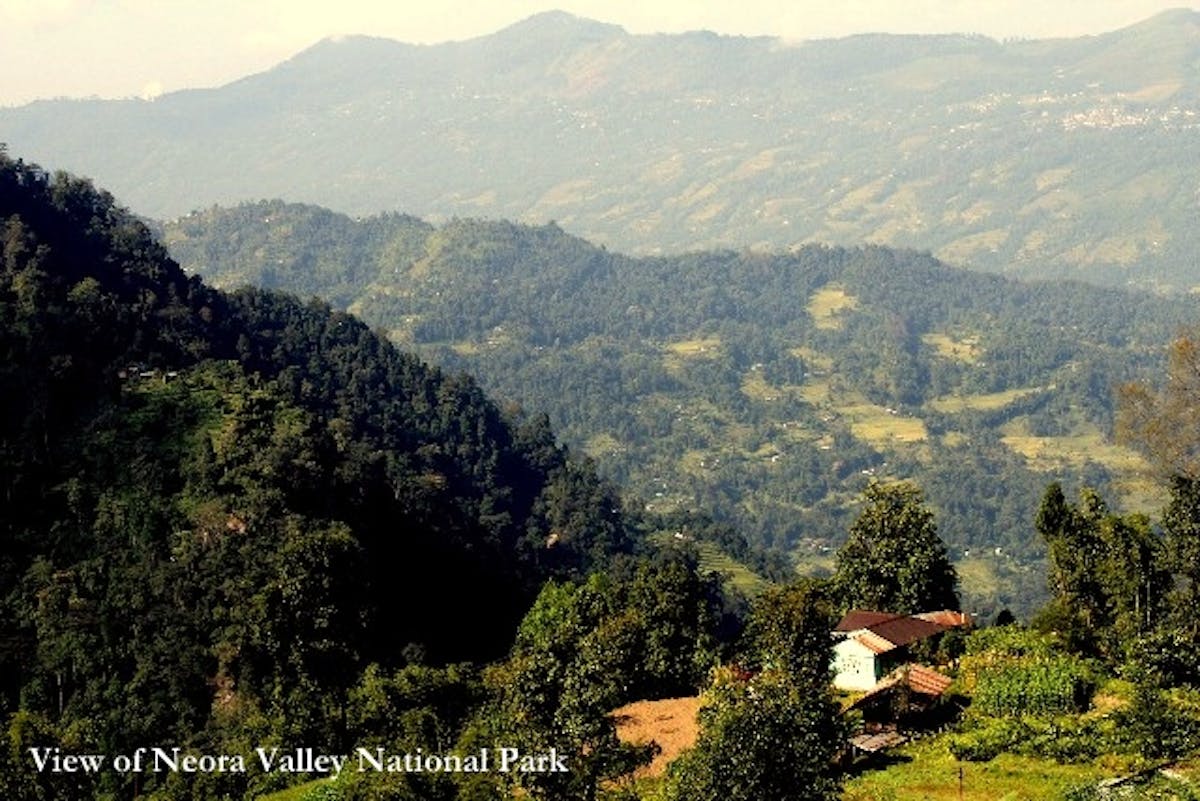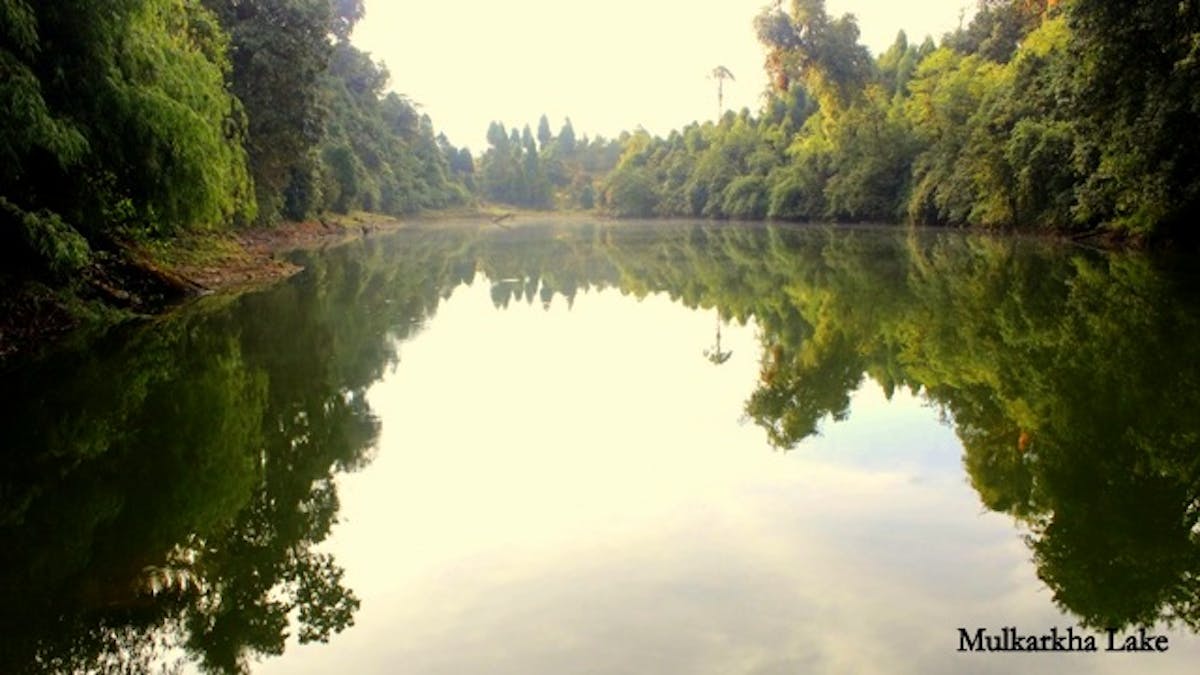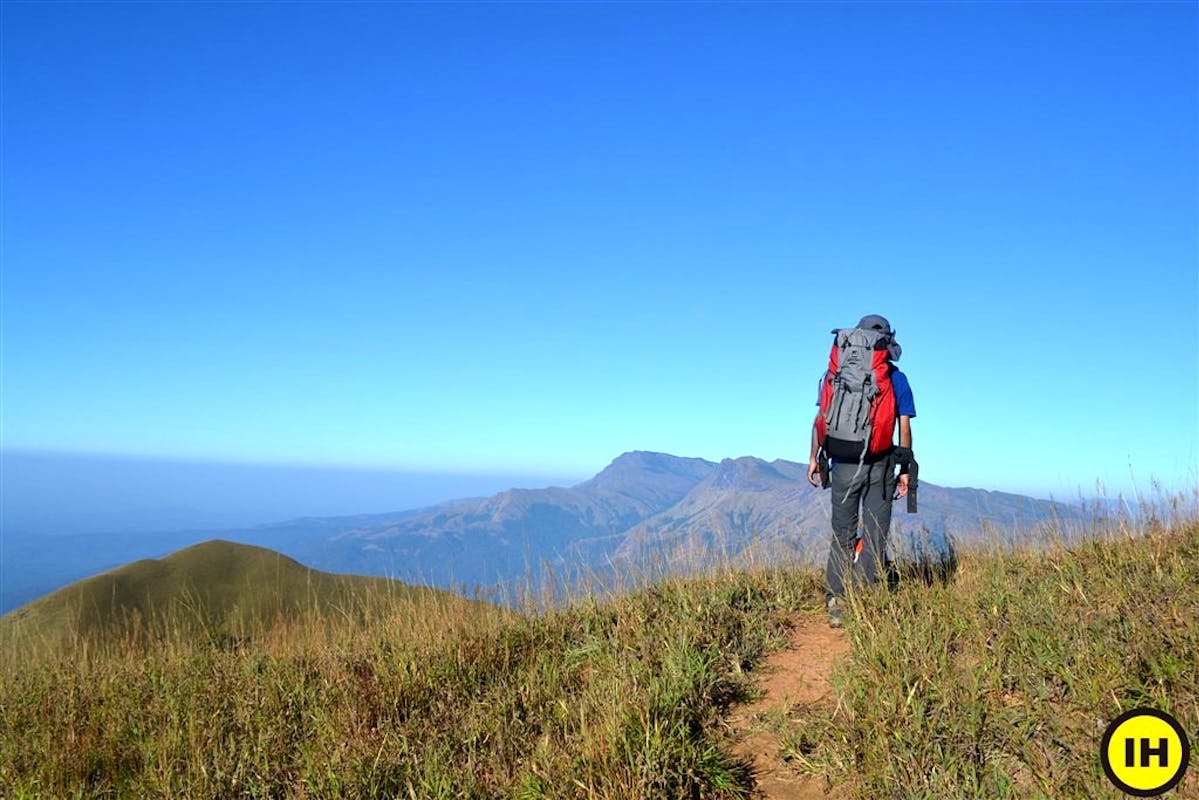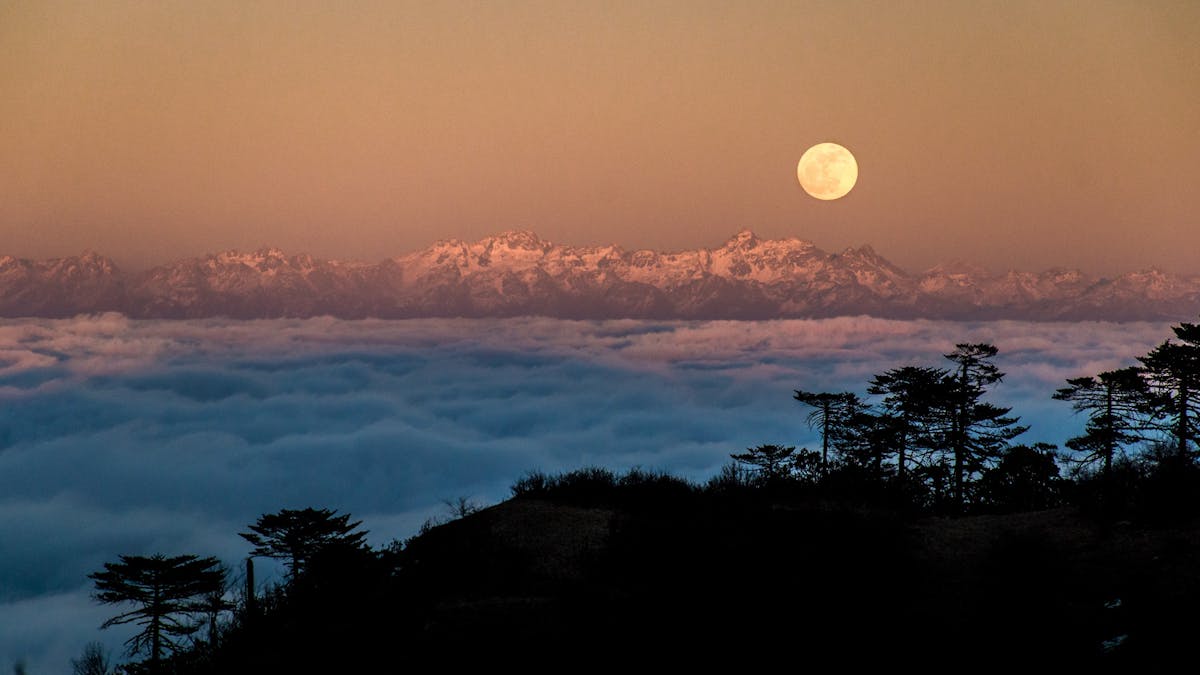Can You Help Us With Photographs Of This Trek?
We are looking to enrich this documentation with more photos. Pictures go a long way in explaining the trail, more than words ever can. If you have done this trek, can you share your photos with us? We will include them on this page, with due credit to you.Click here to contribute.
COMPLETE GUIDE TO MULKARKHA LAKE TREK
Mulkarkha Lake trek in Sikkim is slowly becoming a popular "family trek". It is a rare Himalayan trek where you can take your family with you and enjoy each moment just like a proper family vacation.
The lake called “Mulkarkhais” is considered sacred by the locals and is called a wishing Lake. It is believed that anyone who makes a wish in that lake will definitely find the wish coming true. The is believed to be very powerful. At that moment, I felt as if my wishes have gained spiritual recognition in conjunction with my surroundings. The hospitality of the people here is amazing, to say the least. They make sure that their guests are treated in the best possible way such that there is no discomfort. The authentic traditional food could just make you crave for it again and again.
The trek to Mulkarkha lake goes through small villages of Jhusing, Tagathan, Mularkha and Aritar on the borders with Sikkim-West Bengal. The homestays in Jhusing and Mulkarkha are something to watch out for.
The ideal time to visit Mulkarkha Lake is from the month of October to December. To witness a cultural event, April is another good time to visit. The villagers celebrate Ram Navami by worshiping the lake with celebration furor. This time of the year, the lake is believed to come to life and its sanctity is worshipped by the locals and the villagers.
Short Itinerary
Mulkarkha Lake Trek : A perfect family getaway!
- It is a perfect getaway along with your family
- A beautiful Himalayan trek full of scenic beauty
- The authentic food and culture make you want to do it again and again
Detailed Itinerary
Day 1 : Rhenock to Lingzey Village to Jhusing Village

View of Neora Valley National Park
Rhenock is a small town, 50 km from Rangpo. Rangpo is the gateway to Sikkim. It is close to 80 km from NJP (New Jalpaiguri), the nearest railhead for this trek. From Rangpo, one can hire shared sumo to Rhenock. The ideal time to visit Mulkarkha Lake is from the month of October to December. To witness a cultural event, April is another good time to visit. The villagers celebrate Ram Navami by worshiping the lake with celebration furore. The trek route starting from Rhenock town is a motorable road of two km to Lingzey Village. There is a temple in the village that is considered to be the second largest in Darjeeling. There is a Sanskrit School opposite to the temple where trekkers can rest before moving on to Jhusing. Jhusing is approximately four km from Lingzey. The road from the back of the temple in Lingzey village goes towards Pitamchin. There is a diversion in the road to the right which goes to Jhusing. The diversion is visible after walking close to three km on the road from Lingzey. There is a homestay in Jhusing where one can stay and spend on the night and proceed onwards the next day. The homestay is very aesthetically maintained with a splendid garden in the front leading to the house. The total cost of the food and lodging in the homestay is Rs. 700 per night.
Day 2 : Jhusing Village to Tagathan Village to Mulkarkha

Sevrang Waterfall
After a night in the cozy homestay in Jhusing with the silhouette of Kanchenjunga at the back, the route passes through a forest to Tagathan. There is an amazing hidden waterfall known as Servang falls. The owner of the homestay knows the location well. He guided us to a short trek to the base of a beautiful waterfall. A U-turn at the end of a gravel path leads to the interiors of the dense forest region. Walking along the narrow trail, one begins to get a glimpse of the huge canyon that lies at an arm’s length. Soon in an hour, the roaring sound of the water gives sound proximity of the waterfall nearby. A small clearing of the bush beholds the mighty spectacle in front of the eyes. The Servang waterfall ultimately meets the river which creates this canyon. The melodies of the early morning bird calls are a pleasure to listen to. The narrow trail through the forest finally leads to a wider road entering Tagathan village, close to 2 km from Jhusing. The trail turns a bit steeper going towards Mulkarkha. A few houses rise from the by-lanes providing glimpses of the rural landscape and culture of this region. There is a school before the Mulkarkha village which serves as a resting point. Thick bushes and shrubs dot the trail on both sides as nature beckons one to walk the coveted path. Finally one reaches Mulkarkha village by two in the afternoon. Where another homestay waits for a stay in this village of close to 10-15 families. The total cost of the food and lodging is Rs. 850 per night. The hospitality is a joy to behold. The food is refreshing and delicious to taste. One can spend the rest of the day exploring in and around the village. Mulkarkha Lake is situated at the top of this village and takes around an hour from the village.
Day3 : Mulkarka to Mulkarkha Lake to Aritar

Mulkarkha Lake
An early morning sunrise presents the glory of this lake coupled with the reflection of Mount Kanchenjunga. The hike to the lake goes through a narrow trail upwards to the right of the village. There are Buddhist prayer flags dotting the lake. A small temple serves as a guardian deity with Kanchenjunga peeking from the back of this temple. One can spend hours around this lake feeling so much in sync with nature. After returning back to Mulkarkha village, the trail goes downwards to Aritar. This is the nearest motorable road head. There is a diversion to the left after a good 30 minutes. This is the easiest part of the trek. There are few houses that do a peek a boo once in a while. After a good one to two hours, the town of Aritar begins to look up. A further three km down the motorable road leads one to a cluster of hotels in Aritar. There is an artificial “S” shaped lake in Aritar known as Lampokhri. The tastefully decorated houses with flower pots on the terraces tell a picturesque tale of the place and its denizens. After spending the night at Aritar one can move down to Rhenock. There are regular taxis and cabs available from Aritar to Rhenock. Going downhill by foot takes an hour to reach Rhenock.
How To Get Fit For Your Trek
Cardiovascular endurance
The secret to ascending any trail lies in building your cardiovascular endurance. You can begin by jogging everyday. Ideally, you should be able to jog 4 km in 20 minutes before the start of the trek. It takes time to be able to cover this distance in the given time. Start slow and increase your pace everyday. Swimming, cycling and stair climbing without too many breaks in between can help too. Strength This is another area you should work on. You will need to build strength in your muscles and in your core body. You can do some squats to strengthen your leg muscles. Do around 3 sets of squats, with 8 squats in each set. Apart from this, you can add planks and crunches to your work out.
Flexibility
Another aspect that will help you trek comfortably is flexibility. For this, you can do some stretching exercises - stretch your hamstrings, quadriceps, hip flexors, lower back muscles and shoulders regularly. Carrying a backpack, however light, can become a strain after a while. These exercises will help you to be in good shape before the trek.
Working Out Indoors
If you can't go out and jog because of time and space constraints, here's a video you can use to work out indoors.
What To Take On The Trek

Backpack
No, stuffing it all in isn’t the right way to do it Packing a backpack correctly saves precious time that you might waste trying to find your things later. It is wise to spend some time learning what really goes into packing a backpack.
What should I pack?
On a trek, you only get what you take. Something as simple as a forgotten matchbox can cripple your cooking plans throughout the trek. So, it’s essential to prepare early and prepare well. To begin with, make a checklist. While shopping, remember this thumb rule - keep it light. “Every item needs to be light. This ensures that your backpack, on the whole, stays light,” says Sandhya UC, co-founder of Indiahikes. Balancing out heavy items with light ones isn’t going to have the same effect as having all light items. “Always opt for good quality, light items,” says Sandhya.
How much should my bag weigh?
“Your backpack for a weekend trek should weigh between 8 and 10 kg,” explains Arjun Majumdar, co-founder of Indiahikes, “To break it down, your tent should weigh around 2.5 kg, your sleeping bag, around 1.5 kg, and the ration, stove and clothes should constitute the other 5 kg.” The best way to plan is by concentrating on the basic necessities – food, shelter and clothes. Gather only those things that you’ll need to survive. Do not pack for ‘if’ situations. “That’s one of the common mistakes that people make – packing for ‘if situations’. It only adds to the baggage that you can do without on a trek,” says Sandhya.
One good way to go about it is to prepare a list of absolute essentials. Start with the most essential and end with the least essential. That way, when you feel you are overshooting the limit, you can start eliminating from the bottom. Another tip is to be smart while packing clothes. Invest in light. wash and wear fabrics. "Replace a sweater with two t-shirts," adds Sandhya. Layering is the mantra when it comes to trekking. Refer to Sandhya’s clothes list to pack smart.

Trekking hack
How to pack
The thumb rule for this one is to eliminate air spaces. Make sure that everything is packed tightly, especially clothes and jackets, as they tend to take up maximum air space. Put in all the large items first. Then squeeze in the smaller ones in the gaps. This ensures minimum air space. A good way to pack clothes is by using the Ranger Roll method.
Where to pack
BottomSleeping bag: Make this your base layer. Sleeping bags tend to be voluminous, but do not weigh much. They’re perfect for the bottom of the bag. Tent: Just like the sleeping bag, even tents are voluminous and light. Keep the tent poles separately and place the fabric at the bottom of the backpack.
MiddleHeavy jacket: Roll up the jacket in a tight ball and place it in the middle of the backpack, close to your back. The middle region of the backpack should always have the heaviest items. You can store other things like ration or mini stoves in the middle. Other clothes: Roll other clothes and place them in the remaining space, to fill air gaps.
TopWater: Water, although heavy, needs to be easily accessible. So put it in the topmost region of your backpack. Medicine box: This is another component that you wouldn’t want to be scavenging for when in need. Poncho: It could rain at any time in the mountains. So, ponchos should be accessible easily. Also, having a waterproof poncho at the top of the backpack provides additional waterproofing to items in the bag.

Trek backpack essentials
Alternative treks by Indiahikes
If you're looking for something longer and more picturesque, then we couldn't recommend Sandakphu enough. It is a classic tea house trek in India. And the views that you get on a clear day are incredible.

A magical moonrise on Sandakphu trek
You get to see the 4 of the highest mountains in the world including Mt Everest. The route of this trek lies along the border of India and Nepal. In fact, one constantly moves in and out of Nepal during the trek. The mighty mountains, of course, know no boundaries. They stretch through Nepal, India, Bhutan and further.
Trek Contribution
Author: Sushobhan Roy